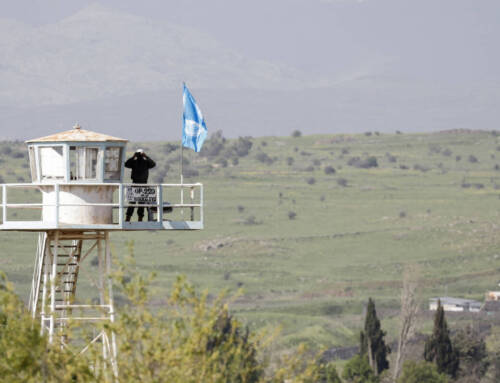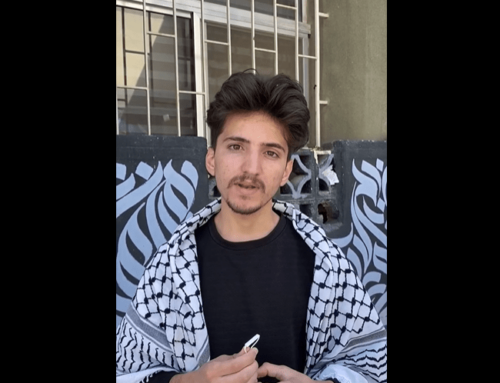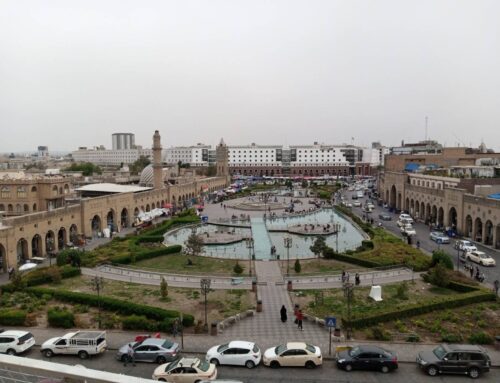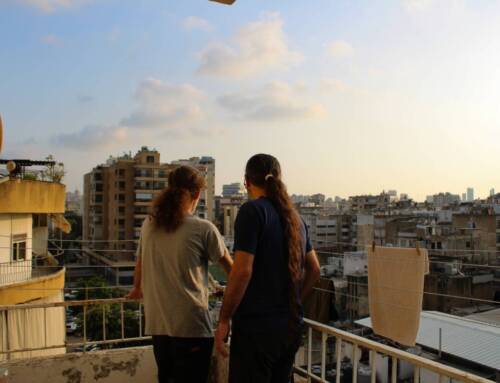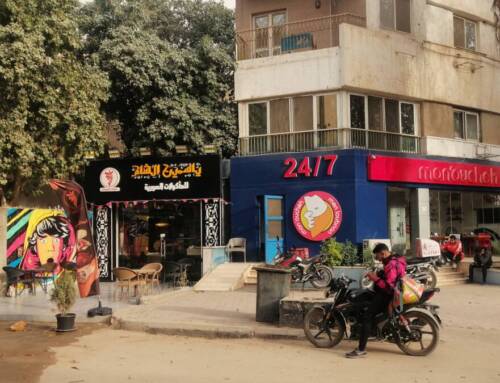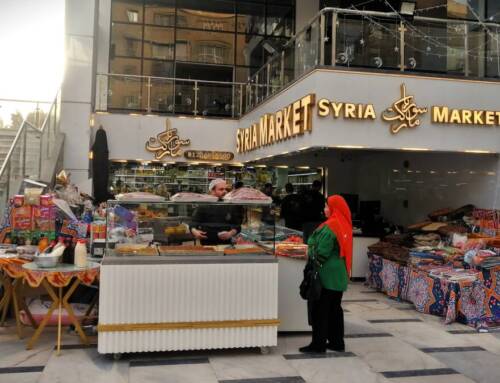Khan Sheikhoun: A city that dies more than once
AMMAN - Until recently, the city of Khan Sheikhoun was a symbol of life in Syria. While some accounts date the building of the city to the Byzantine era, discoveries made of buildings and tunnels that sometimes exceed one kilometer in length trace back to the third millennium BC.
15 August 2019
A member of ‘The White Helmets’ walks through a devastated neighborhood in Khan Sheikhoun, 16/6/2019 (Hameed Al Qatini)
AMMAN – Until recently, the city of Khan Sheikhoun was a symbol of life in Syria. While some accounts date the building of the city to the Byzantine era, discoveries made of buildings and tunnels that sometimes exceed one kilometer in length trace back to the third millennium BC.
The city received its name, according to some of its residents, from a 14th-century khan or caravansary built in the city’s center next to al-Takeyah Mosque and a palace both built by Abu al-Huda al-Sayadi, a minister in the era of the Ottoman Sultan Abdulhamid II.
The city that had once been full of life, as described by its people, is now only associated with what seem to be unending massacres against the town’s civilians and mass destruction as a result of the systematic targeting of civilian facilities, medical centers, and other areas by the government’s armed forces and Russian aircrafts.
Chemical and other massacres
Khan Sheikhoun is located on Aleppo-Damascus highway, between the northern countryside of Hama (south), al-Ghab plain (west), and the Turkish-Syrian (Jisr al-Shughour) border (northwest).
This strategic location explains the fierce fighting between the government and the opposition forces. The city came under the control of the opposition militant groups, in addition to Hayat Tahrir al-Sham (Jabhat al-Nusra, then), at the beginning of 2014.
On April 4, 2017, the government air forces struck the city with missiles loaded with Sarin gas, which resulted in the death of around one hundred people, one-third of them, children.
Despite the September 2017 Astana agreement between Russia, Iran and Turkey, on the formation of a “de-escalation zone” in Idlib province and the opposition-held surrounding areas, the Syrian government forces and its Russia ally began a large-scale military campaign on the towns of Idlib’s southern countryside and Hama’s northern countryside in late April.
Since the start of the current campaign, Russian and Syrian military aircrafts have targeted the neighborhoods of Khan Sheikhoun with more than 1,150 raids, killing 37 civilians, including 4 members of the Civil Defence, and injuring about 85 others, the spokesperson for the Syrian Civil Defence (The White Helmets) in Idlib, Ahmad Al Shaykho, told Syria Direct last month.
While the unprecedented shelling of government forces and Russian planes in the last campaign led to “more than 90 percent displacement of the city’s population into neighboring villages or the northern border with Turkey,” the bombing led to the destruction of more than half of the city’s infrastructure, the departure of 9 schools from service, and the destruction of a center for civil defence, Shaykho added.
Despite the strained humanitarian conditions within the city where there is no electricity or water, according to local council member Abdul Majeed Sarmani, “Nearly 50 families have been forced to stay, because they cannot bear the burden of displacement [Including not having] money to rent houses on the border.”
Among them is the family of Ahmed, a 25-year-old man, who decided to stay with his elderly parents at his home on the outskirts of the city. He has no money to rent a house on the border and refuses to leave his mother and father under fire.
Ahmed visits nearby villages in the quiet moments between shelling to bring food to his parents. “I am trying to reach the neighboring villages, which are about 15 kilometers away from us for food. We are living the most difficult days, as there are no shops left in the city and no human remains,” he told Syria Direct.
Ghost town
As of this year, the number of Khan Sheikhoun residents, including IDPs, has risen to 90,000 from about 34,000 people, according to Sarmani.
But the “beautiful city [which was] full of people, markets and gatherings, has turned into a ghost town” Mahmoud al-Idlbi said, after revisiting his once-standing house, now rubble. “Khan Sheikhoun has become a city overcome with darkness, void of a population, where only dogs and cats remain,” he told Syria Direct. “The scent of death is in every alleyway, the roads are closed because of the accumulation of rubble. The city has changed completely.”
Mu’ayyad, a resident of the city, said that “the barbaric shelling of the area has [led to] the erasure of the city of Khan Sheikhoun from the map because no stone remains in place.”
“The regime is hostile to Khan Sheikhoun,” Sarmani added. “We can’t forget the chemical massacre that left many martyrs. The regime of Assad and the Russians are trying to avenge and erase features of the city and any evidence against Assad in the future in the event of the international courts for accountability.”
Memories of a beautiful time
Two days ago, Ahmed and one of his friends went into Khan Sheikhoun at night to check on it after one round of aerial bombardment. But with the horror that fills the city, he said, he no longer dares to enter it again.
He reminisces on the days he spent with his friends in the streets of the city before the current military escalation by the government forces and its allies. “When we walked through the streets of the city, we smelled the food from restaurants in the market, and there was a Friday market where people from all over the area gathered,” he said.
“There was also an old mosque and an old Hammam [public bath] where we met each week, my friends and I. There was a life … now all this is a memory of a beautiful time.”
Translated by: Nada Atieh


